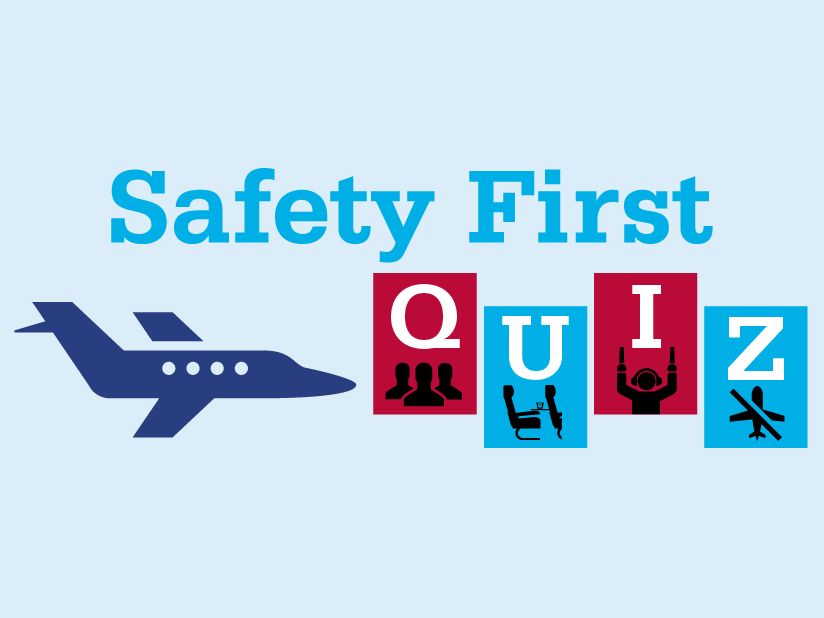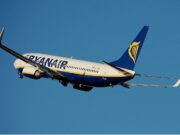
“Safety first” should be a strategy and not simply a slogan. Use the following short quiz, which is based on risks that have resulted in significant losses during business aviation operations, as a tool to guide your flight department’s continuous improvement and to make “safety first” more than just words.
The quiz questions below focus on these important areas:
- People Performance — Eighty percent of accidents are people-sourced. Therefore, the vast majority of safety initiatives should be people-oriented.
- Passengers —The safety of passengers has a critical impact on the success of the enterprise. Your team can help prevent even a minor injury that can disrupt the timing of critical projects and the loss or delay of millions of dollars of business.
- Ground Operations — The greatest source of aviation insurance claims is from ground operations failures. Most of these issues can be addressed with appropriate processes, procedures and behaviors.
- Supplemental Lift Services — Do your passengers incur elevated risks when they fly with other business aviation providers? You can manage that.
- People Performance
- Regarding a holistic safety management system (SMS):
- Does your SMS include a flight risk assessment tool (FRAT) that is actively updated by your flight crews for each leg?
- Does your FRAT emphasize human performance? In other words, does your FRAT score place greater weight on human factors items than on those assessing aircraft, weather and runway conditions?
- Does your maintenance team use an SMS process? Do they use a maintenance risk assessment tool (MRAT)? Does the MRAT focus only on major-risk operations?
- Does your scheduling/dispatch team use an SMS process? Scheduling is the area where risk identification and mitigation begin. Shouldn’t scheduling be integrated into a comprehensive departmental SMS?
- Regarding fatigue management and rest assurance (reference Duty/Rest Guidelines for Business Aviation, published in April 2014 by Flight Safety Foundation and the National Business Aviation Association):
- Are your acute fatigue management guidelines well understood, routinely adhered to, measured and reported?
- Are your chronic fatigue management guidelines well understood, routinely adhered to, measured and reported?
- Are your crew rest guidelines well understood, routinely adhered to, measured and reported? Note: This element often is cited in U.S. National Transportation Safety Board accident reports.
- Regarding fitness for duty:
- Do you require your pilots to maintain a current first-class medical certificate?
- Do you require your pilots to use only company-approved aviation medical examiners?
- Does your company have loss of license insurance for your pilots? If not, what incentives do you have for pilots to stop flying when they should?
- Do you have a mandatory retirement plan for your pilots and maintenance technicians? If not, do you have a retirement incentive program?
- Do you have a fitness-for-duty assurance program for your maintenance technicians?
- Regarding a holistic safety management system (SMS):
- Passengers
- Regarding cabin safety:
- If you have super-midsized or larger aircraft, do you require a trained cabin safety attendant to be a crewmember for all passenger-carrying legs?
- Do you require all frequent passengers to participate in formal cabin safety/evacuation training? Note: If the answer to 4a is “no,” then 4b becomes even more critical.
- Regarding seat belt and loose equipment discipline:
- Do your passengers always fasten their seat belts when they are in their seats?
- Do your passengers stow their tables, trays and loose equipment (computers, portable video monitors, etc.) below 10,000 ft or when the “fasten seat belt” light is on?
- Regarding aircraft embarking and disembarking safety:
- Do you always have a crewmember/staff member stationed at the base of the aircraft stairs in case a passenger slips or trips while entering or exiting the aircraft?
- Do you take all passenger carry-on items onto/off the aircraft for your passengers so they have both hands free for climbing and descending the aircraft stairs?
- When it is raining, do you have a crewmember handle the passengers’ umbrellas while they get into and out of the aircraft?
- Are passengers routinely escorted to and from the aircraft across all aircraft operations areas?
- Regarding cabin safety:
- Ground Operations
- Regarding hangar and ramp safety, and aircraft movement/storage:
- At home, is the aircraft moved using a trained ground-handling team of a driver plus at least two wing walkers equipped with whistles or horns?
- When stowing the aircraft, do you maintain a minimum clear zone to avoid overlaps and “hangar rash” (damaging contact with nearby aircraft or objects)?
- When away from home, is a crewmember required to directly supervise all servicing of the aircraft (fuel, lavatory, movement)?
- Regarding fall protection:
- Do you have fall protection equipment?
- Is fall protection used for all operations involving a specific vertical exposure — 4–6 ft (1–2 m)?
- Regarding hangar and ramp safety, and aircraft movement/storage:
- Supplemental Lift Services
- Regarding vetting of supplemental lift services:
- Do you use either Wyvern’s and/or ARGUS’ top ratings as your minimum standard for the identification of other companies to provide supplemental lift support? Is that “good enough”?
- Do you have minimum equipment requirements for the aircraft you use for supplemental lift?
- Do you have an age limit for the airframes or flight crews you allow to be used for your supplemental lift?
- Regarding minimum experience:
- Do you have minimum experience levels that you require for pilots providing supplemental lift? The accident rate for pilots during their first 100 hours of operating a new aircraft type is dramatically elevated. If they have fewer than 400 hours in type, they probably have not seen how the aircraft performs in all four seasons.
- Do you require two highly qualified, highly experienced captains as a crew? If the aircraft requires a crew of two, why would you settle for, in effect, single-pilot operations supported by an under-qualified or inexperienced second pilot?
- Regarding vetting of supplemental lift services:
How did you do on this quiz? Even more important: What will you do? Consider following these next steps as you make improvements:
- Highlight your successes. Be sure to reinforce what you are doing right.
- Discuss among your flight operations team the quiz items you missed.
- For each item you agree should be done: Do it. Confirm it. Track it. Report it.
Pete Agur is chairman and founder of The VanAllen Group, a management consulting firm for business aviation. He holds an MBA, a B.S. in aeronautical sciences and a certified aviation manager designation from the NBAA. He also holds an airline transport pilot certificate for fixed-wing aircraft, a commercial pilot certificate for helicopters and a private pilot glider rating. He has been an active member of Flight Safety Foundation’s Business Advisory Committee for over 25 years.

